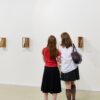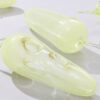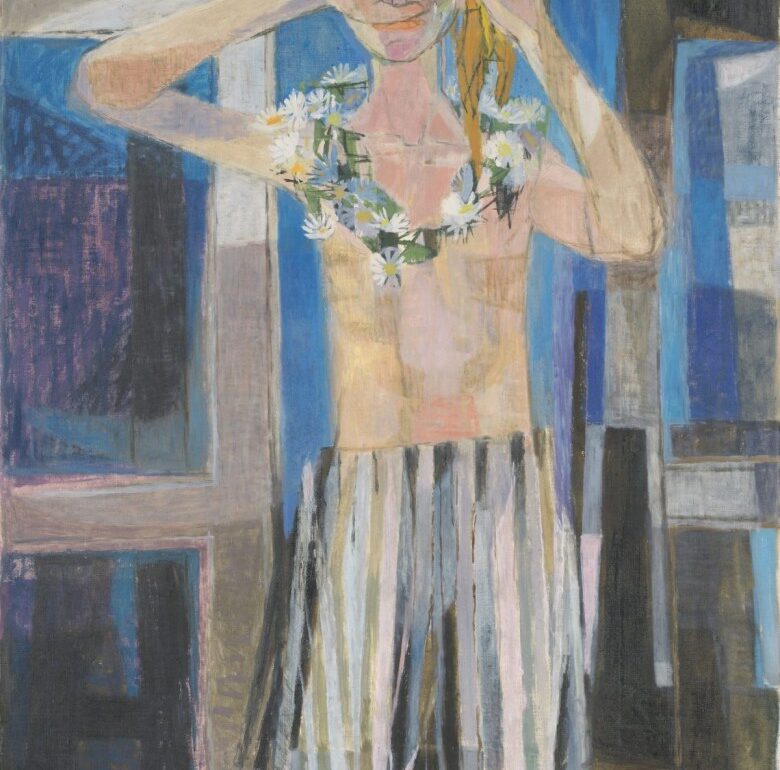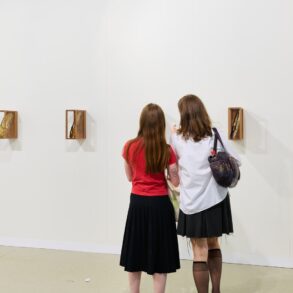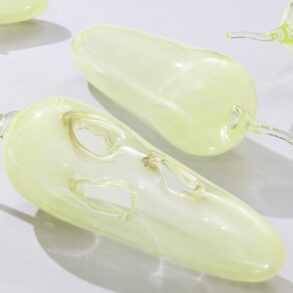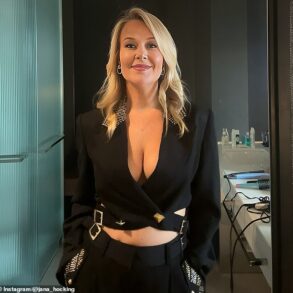OSLO — Look closely at the paintings of Else Hagen and beneath the rainbow of festive color lurk clouds of feminist angst. A mother ignores her playing children as warplanes hover outside. A woman in garter belts glares in the mirror while prepping for a tryst. A group of girls huddle beneath a tree, their heads dolefully facing at the ground.
Best known in Norway for her monumental installations in the 1960s and ’70s, Hagen warrants equal, and overdue, attention for her intimate midcentury oil paintings. These canvases are the throbbing heart of Else Hagen: Between People at the National Museum, the late artist’s first museum retrospective. A more fitting subtitle might be “Between Women” for how often Hagen plumbed the tensions, envies, frustrations, and tender bonds among feminine subjects.
In “The Secret” (1945), four girls tower over an open book, their curled bodies forming a bright mass of yellow, orange, and red. Sitting to their left, a girl with a sable bob watches silently, one bare foot crossed behind the other. Outside the circus-hued room, a dark crowd of hatted men move on, oblivious. But inside the domicile, the exposed pages suggest a stolen diary, a young woman’s innermost thoughts available for others’ amusement or judgment.
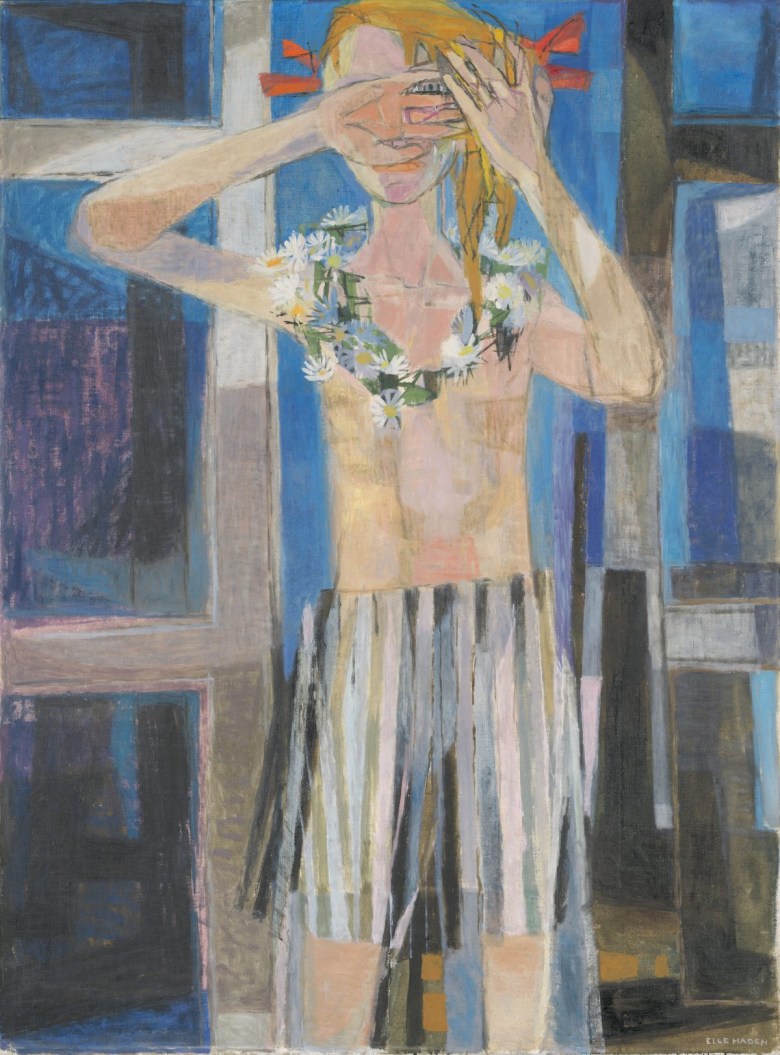
The complex female psychology depicted in Hagen’s vibrant, disquieting paintings feels defiantly ahead of its time. This is in part because her work speaks to the interiorities of women whose common plights — being ostracized, humiliated, sexualized, infantilized, and alienated within the domestic sphere — are so often relegated to the background, if not outright rejected as content worthy of artistic attention. Hagen’s feminist consciousness is not rooted in a romanticized vision of peaceful matriarchs and sisterly daisy chains. In “Floral Priest Collar” (1956/7), a lone young woman dons only a flower necklace and paper skirt, and blocks her face behind her hands, as if to say, “You can’t have me” to the passing viewer.
Hagen’s women keep secrets, break oaths, gossip, and play games just as they link arms, feed children, get bored, and get frisky. The artist grants feminine experiences the depth and dignity they deserve and honors the edges that define them. Women are not heroes or saints, but flawed humans navigating grueling, if often banal, challenges. It is no surprise to learn that, in the middle of the “housewife era” in Norway, Hagen doggedly pursued, and achieved, a career as a prominent visual artist even after becoming a wife and mother, encouraging other women of her time to do the same. “For a while,” the artist once said of her experience during the 1950s, “shaking myself and my fellow women out of slumber and apathy became almost as important to me as making paintings.”
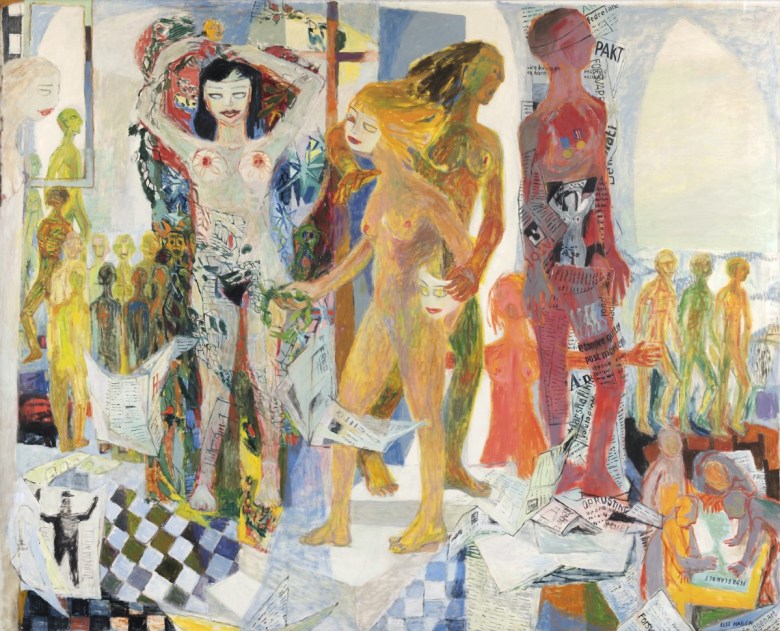
Despite the pedestrian nature of their settings, the canvases teem with energy. In “The Roles Assigned” (1950), one of Hagen’s largest paintings, three nude women are surrounded by floating, crumpled newsprint. Two wear white masks with red lips, but the third — her eyes directed at something out of the frame and her mouth agape with alarm — has removed her mask with one hand while the other reaches around the central woman’s neck. To the far left, another woman’s masked face appears in profile, as if to voyeuristically appraise the conflict. Anonymous male silhouettes pattern the background, tiny against the women’s bodies; as in “The Secret,” they seem utterly peripheral to the drama of the scene.
In “Self-Portrait” (1940) — painted when Hagen was only 26 years old, newly married, and four years away from having her first child — one half of her face is a warm salmon and the other half an icy teal. Just as extraordinary as the color is this woman’s subtly imperious expression. Her gaze is slightly downcast, her loose hair catching a sliver of sun. She looks effortlessly chic but somewhat pensive. She is, like Hagen’s body of work, unabashedly modern.
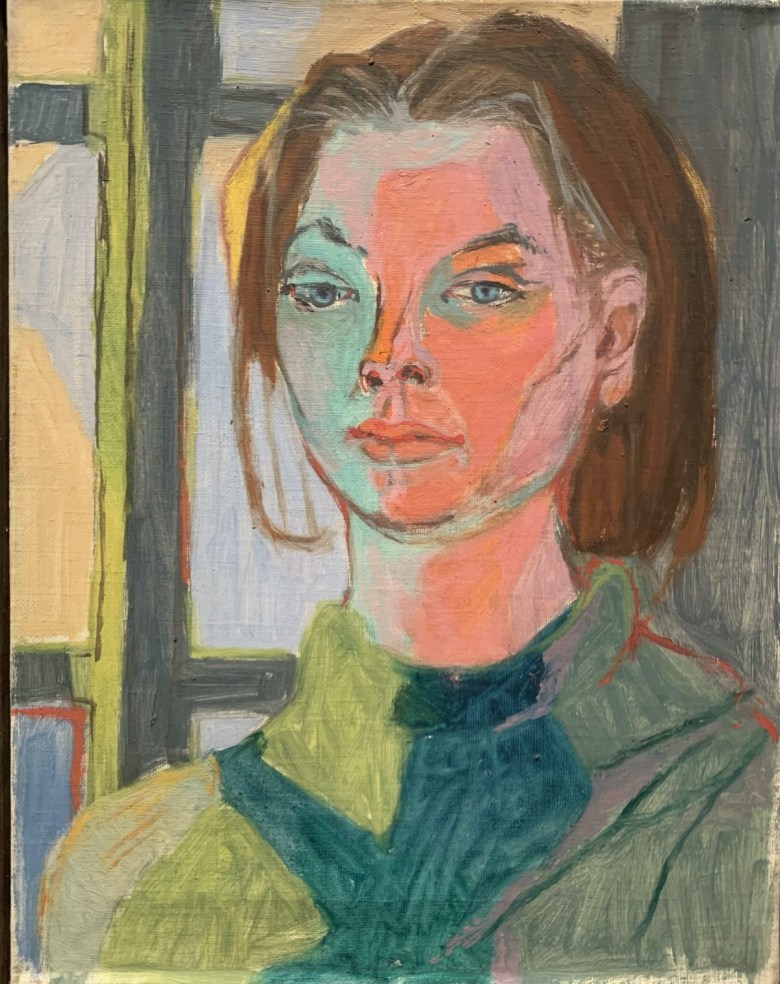
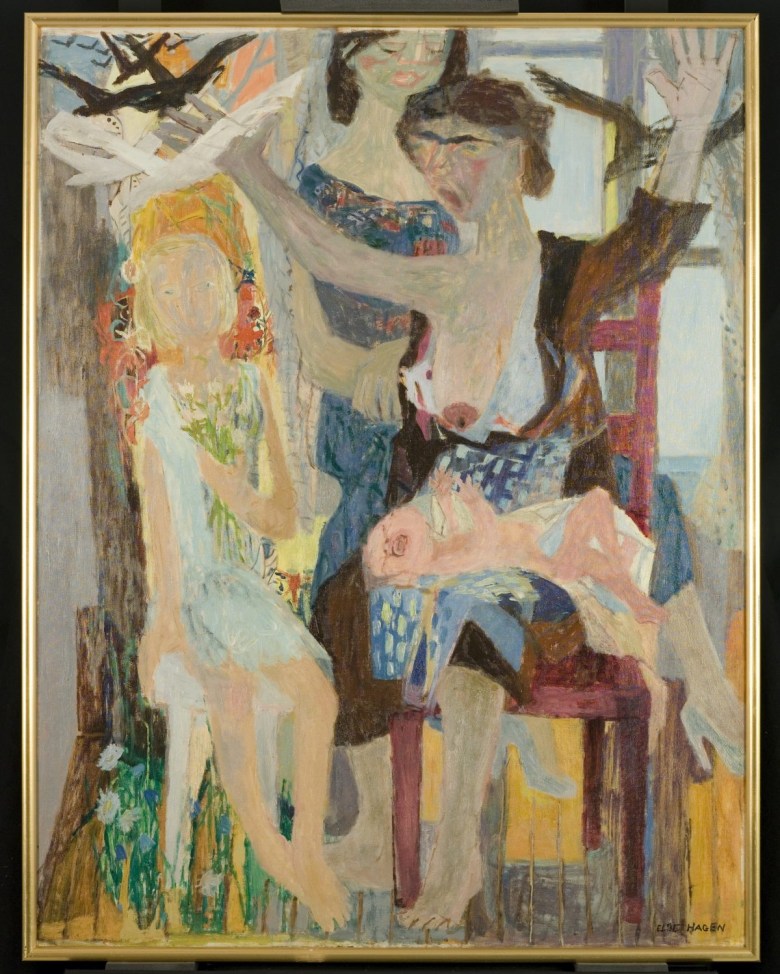
Else Hagen: Between People continues at the National Museum Norway (Brynjulf Bulls plass, Oslo, Norway) through January 26. The exhibition was organized by Stavanger Art Museum, Trondheim kunstmuseum, Kunstsilo, and the National Museum and curated by Øystein Ustvedt.
This post was originally published on this site be sure to check out more of their content

